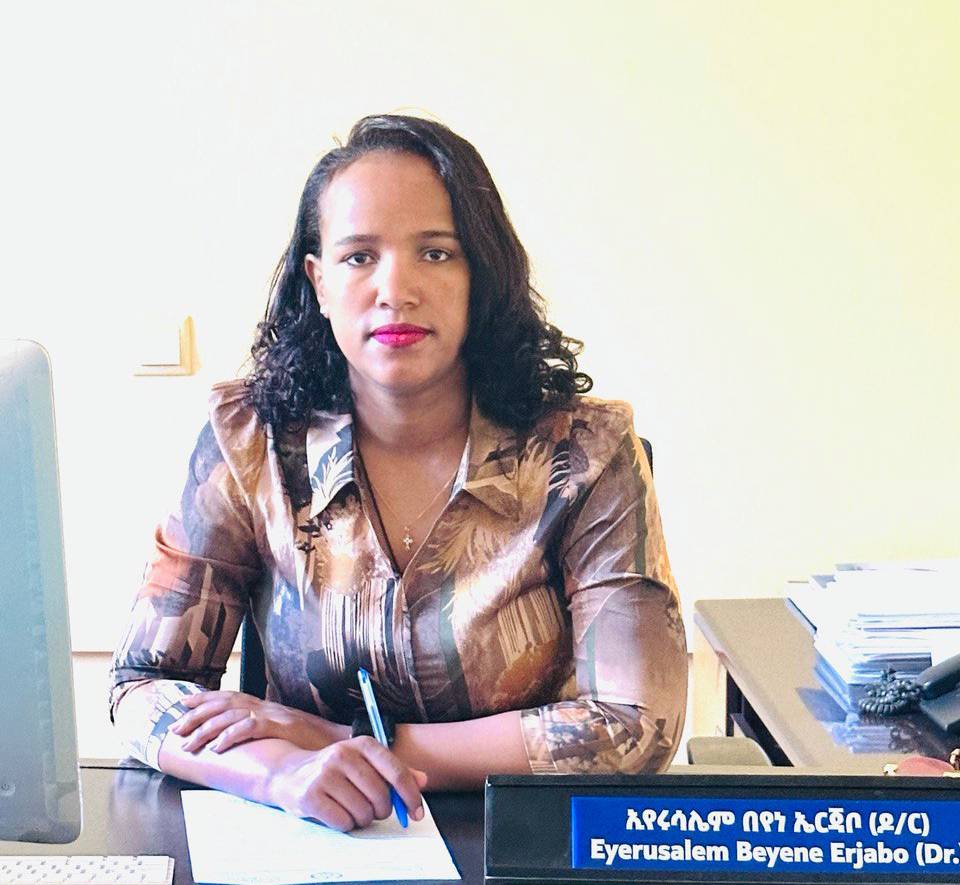Background
The director office was established as a component of a new structure for university hospitals throughout the country. The director office was previously named School of Medicine.
The director office is situated at Nechsar Campus. The school, from its conception, has been focusing towards core agenda of running the programs which earnestly complement and supplement the healthcare needs of the nation. The director office consists of seven departments namely department of Internal Medicine, Surgery, Dermatology, Gynecology and Obstetrics , Pediatrics, Anatomy & Biomedical science and Preclerkship Module coordination office.
In the past, Ethiopian human resource for health had acute shortage of trained healthcare professionals. Therefore, having identified the cause, a strategic plan primarily focusing at producing skilled health professionals in the specified time frame was duly formulated.
Currently the medical education wing enrolled medical students from pre medical to internship and planning to launch postgraduate programs in residency in four major departments consisting general surgery, internal medicine, gynecology and obstetrics and pediatrics. In addition there are three postgraduate programs in the school ( Msc in Medical Biochemistry, Clinical Anatomy and Medical Physiology)
Nine batches of undergraduate Medicine students graduated from the school and joined the work force.
Mission & vision of the director office
Vision: The director office aspires to be among the premier academic medical centers in the nation in outstanding medical education, innovative research, and excellence in patient care and community service.by 2030.
Mission: Our mission is to provide comprehensive healthcare services, teach high quality medical education and meet the needs of the communities we serve through our advanced and affordable healthcare system and conducting problem solving research, and providing need based community services.
Program learning outcomes
The program learning outcomes of the competency-based curriculum are derived from the competencies of the curriculum. The program outcomes are listed below
- Enable graduates to become good communicators in the clinical set up and within the community
- Equip graduates with the necessary knowledge and skill to enable them to practice medicine with the utmost capability
- Analyze the clinical data and practice evidence-based practice
- Demonstrate a collaboration skill with fellow clinicians, other health science and other professionals
- Lead and manage healthcare teams and healthcare facilities
- Engage in continuous professional development
- Adhere to national and international codes of ethics and professionalism
- Advocates health for patients and the society
- Engage in research and community service activities
Programs under the director office
• Undergraduate Medicine program
• Master’s program in Clinical Anatomy
• Master’s program in Medical Biochemistry
• Master’s program in Medical Physiology
Number of graduations from programs in the School
Till October,2024 G.C nine batches of UG medicine students, 5 batches of Clinical Anatomy and one batch of Medical Biochemistry students Graduated and joined the workforce
Anesthesia department
MISSION, VISION AND OBJECTIVES OF THE PROGRAM
Mission
To produce competent anesthesia professionals who will provide the full scope of anesthesia service, as defined by the professional scope of practice, with good knowledge, clinical skills, attitude, and critical thinking abilities.
Vision
- It aspires to become one of the leading centers of excellence in Ethiopia in professional quality, research and community service by 2035
Educational Objectives of the program
- To equip anesthesia professionals with solid knowledge of biomedical science, clinical and public health practice
- Prepare anesthesia students to assess and optimize patients with co-morbidity for surgery and anesthesia
- Prepare anesthesia students in providing individualized anesthesia clinical care using an individualized anesthesia management plan.
- Equip anesthesia students on the management of patients with multiple Co-existing diseases using the existing scientific knowledge
- Enable anesthesia students to practice professionally on all levels of anesthesia clinical care setting
- Train anesthesia students in developing professional communication skills in dealing with patients, patient families, and other health professionals
- Prepare the anesthesia students to participate in conducting and utilizing relevant research
findings - Train anesthesia students to apply evidence-based Anesthesia clinical care practice
- Train the anesthesia student in practical skills based on a theoretical foundation
- Equip the anesthesia students with leadership and management skills
- Equip anesthesia students with critical thinking and decision-making skills which lead to reflective and responsible practice
- Equip anesthesia students with knowledge and skill in emergency and critical care which help them to handle critically ill patients
- Prepare anesthesia students for post-graduate studies
Program Learning Outcomes
- Assess, optimize and prepare patients for surgery and anesthesia
- Utilize anesthesia machine, equipment, supply, and monitoring devices properly
- Manage patients’ airways using different modalities
- Provide safe intraoperative anesthetic management for patients
- Provide safe postoperative anesthetic care
- Manage pain for different patient groups
- Engage in pre-hospital, emergency, and critical care services
- Perform cardiopulmonary resuscitation (CPR) effectively
- Apply ethical and legal principles in anesthesia practice
- Manage anesthesia service in a health facility
Contact address
Director - Dr. Eyerusalem Beyene Erjabo( Assistant Professor of Internal Medicine)
Office telephone number- 0468810973
Cell phone number- 0912687882
Email-
